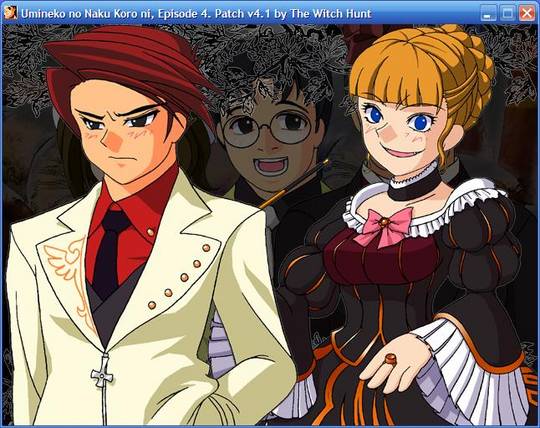One of the things which I find most disappointing about the state of western visual novel development is that with overwhelming frequency, western visual novel developers choose to closely mimic the style of Japanese visual novels in terms of setting and genre conventions, as well as art style. High school romances (and all of the storytelling tropes associated with them) constitute the visible majority of visual novels in the west just as they do in the east. Many western developers have even chosen to use a Japanese high school setting (or facsimile thereof), apparently too daunted by the prospect of blazing trails unexplored by Japanese visual novels before them.
To be fair, there are several regards in which western visual novels commonly diverge from their Japanese counterparts. Western-made visual novels tend to shy away from pornographic content, and oddly enough, also tend to cater to female audiences with greater frequency. Although female-oriented visual novels do exist in Japan, they are fewer and farther between, while it seems that female-oriented titles almost constitute a majority of western visual novel releases. The more female-oriented nature of the western visual novel market is, to some extent, the effect of a largely female-dominated development community. However, the market that these developers have cultivated is one which seems to be equally favor females, as evidenced by the commercial success of many western-made otome games. Although the unfortunate side of this becomes evident when it drives commercially-successful English novel developers to use Twilight for market research, it does suggest that western-made visual novels stand to reach an audience beyond the stereotypically male audience associated with Japanese visual novels and most electronic storytelling mediums. Certainly, the lack of pornographic content broadens the potential audience of western visual novels, and allows them to explore non-romance genres with greater ease. Yet, despite having the advantages of a much broader potential audience, most western visual novels have failed to break out of the niche genre utilized by the Japanese, continuing to retread the same tried and tested tracks already worn deep by previous visual novels.
In the Japanese market, adherence to genre conventions is understandable. Japanese visual novels can be high-cost endeavors, with some commanding production costs on the scale of tens of millions of yen (hundreds of thousands of dollars). ((Canned Dogs has a highly informative post which details the costs associated with Japanese eroge production, for those with an interest in the details.)) Games with high development costs command similarly high sticker prices, sometimes exceeding prices as high as ¥9,000 ($112 US). ((For a look at what the most popular visual novels can cost in Japan, take a look at some popular Key releases, such as Little Busters and Clannad.))
Western visual novel developers, conversely, tend to work with much smaller and more limited budgets, sometimes less than a hundredth the size of Japanese productions. Furthermore, the sale price of western-made visual novels tends to be much lower, generally not exceeding $20. Rather than relying almost exclusively on an otaku fanbase who are willing to pay inflated prices for products conforming to a specific set of expectations, the lower price point allows commercial western-made visual novels to reach beyond their “usual” audience to those who may have only a passing interest in most visual novel releases. The cost of visual novel production in Japan and the nature of the otaku market discourages tinkering too much with a proven formula, but western visual novels have no such restriction.
A similar phenomenon can be observed in game development (mostly in the west, though not exclusively), where larger game studios tend to be more conservative in their production choices, resulting in less innovation in many cases, while smaller indie developers have the ability to take more risks and try out new ideas. Some indie developers even rely on novelty and innovation as a selling point, as it can be difficult to outperform high-budget studios when competing at the same game. Indie game development has become a more viable business proposition in recent years, in part due to the greater availability of development tools and digital distribution platforms. Fortunately, visual novel development already enjoys both of these advantages, arguably more so with regard to development due to the lower barrier to entry.
Western visual novels should be more innovative, not less. They have the freedom to experiment and try new and ambitious things that could rock the foundation of the current visual novel community. Some ambitious flops are bound to result, but the consequences for failure are much less. Some interesting ventures have already been made in this direction, such as Digital: A Love Story, whose presentation is atypical to be sure. Although experimental works like this are currently but a small sliver of current western visual novels, I suspect it is western developers who will be blazing new trails and taking the medium in new directions as it matures.
